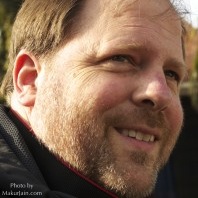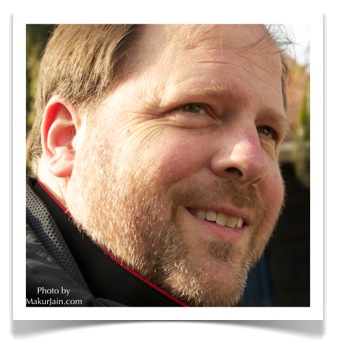Here are some selected photos for 31 December 2016 – 6 January 2017. Click any image for a larger gallery view which also includes information about the camera and settings used. Hover over any image for captions if available.


Here are some selected photos for 31 December 2016 – 6 January 2017. Click any image for a larger gallery view which also includes information about the camera and settings used. Hover over any image for captions if available.

Here are some selected photos for December 24-30. Click any image for a larger gallery view which also includes information about the camera and settings used. The Prisma App for iPhone was used for some of these photos. Hover over any image for captions if available.

Here are some selected photos for December 17-23. Click any image for a larger gallery view which also includes information about the camera and settings used. Hover over any image for captions if available.

Below are 49 selected photos from 2016. Click on any photo for a larger gallery view.
On December 11, I wrote about MOO business card printing, and explained how each set of cards can have as many as 50 different designs, photos, or text on the back. So, I decided to print up a set of 50 with these 49 photos plus one that says ‘tech support’ – to make a total of 50. I went back over my photos from this year, and the ones selected here seemed like a good batch to use for printing. The wider panoramic images were cropped on the cards, but shown here you can see the full-size images. These were all taken using my iPhone 6 Plus or iPhone 7 Plus.
The cards arrived yesterday and the color quality of the print is amazing. They are about as thick as three regular business cards (like a credit card). I’m looking forward to sharing these, and then printing some more. It will be fun to see which photo people choose when selecting a card. You can learn more about MOO on their website.
Use this link to order business cards from MOO and you’ll get a $15 discount.
I’ve been admiring cards from MOO for a long time whenever I saw them. They are very thick and have a smooth soft velvety texture. There’s an option to have rounded corners, and unusual size cards. So today I finally placed my first order and got a referral link to share with others.
To place my order, I used a $15 discount referral code that I got from a friend so the order was about $25 for 50 cards which included the standard shipping. They should arrive in a couple of weeks.
They have an expedited ordering service that costs about $50 extra and several options in between depending on how soon someone wants their cards.
One thing I like about their online card design options is that you can have 50 different designs or photos on the back of your cards for a single order. So that’s great for designers, photographers, creativists, and entrepreneurs who may have several businesses or services available.

Personal Update 201612 | 03 December 2016 | Saturday
Greetings,
I hope you’re doing well. Thanks for taking a moment to read my latest update.
Over the past month I’ve been settling into a good workout program of walking, biking, strength training, and elliptical workouts. I’m using an Apple Watch now to track my workouts which is a great tool since it has GPS mapping for tracking routes, and monitors heart rate to determine the intensity of workouts. Each morning, I lift 7,700 pounds (calculated by totaling reps and sets).
Although Thanksgiving was a few days ago, I wanted to share this message I posted to Facebook about gratitude, along with the photo I posted with it.
Thanksgiving is a National Day of Gratitude, yet comes at a time when the skies are gray, the days are short, the weather is cold, the flowers are gone, the fields are dry, and the warmth and light of the sun are hidden. Most of us don’t have a big year-end harvest to appreciate. It’s easy to give thanks on a bright sunny warm summer day, but what about now? Perhaps it’s a good thing that Thanksgiving comes at this time of year. We need to grow our gratitude and give thanks even when the things we’re thankful for aren’t easy to see ‘low hanging fruit’ but the fruit of much labor and those things that are hidden from our sight. Most of the ‘things’ we’re thankful for aren’t things at all: family, friends, health, education, career, love, forgiveness, a positive outlook on life. I’m grateful to have a day set aside to reflect on all we have to be thankful for. Happy Thanksgiving to you and your loved ones.

If you’ve been following my posts on Facebook, then you’ve seen some of my recent photography. Here’s a post I shared a few days ago about my nature photography.
People ask me about my photography – What’s my secret… what special camera do I use, what lenses, filters, software, tripods, etc. You might be surprised to learn that the quality and beauty of my nature photography has nothing to do with me or the equipment I use. Most of my photos are taken using a smartphone in auto mode. Sometimes I’ll add a lux effect. However, what really makes these photos possible is the following… In Iowa City and the surrounding area communities, there’s a commitment to preserving natural habitats, neighborhood parks, green spaces, trails, wetlands, prairies, parks, lakes, reservoirs, streams, rivers and many other spaces for wildlife and people to enjoy. Without a commitment to natural preservation, there’s no camera or photographer in the world who could capture these images because they wouldn’t exist. Think about that for a moment. Want to contribute to my photography? Donate to an organization that preserves natural habitats.
This month I shared a little bit about how having a personal blog has influenced my writing style. You might find that article interesting.
Many thanks to all of you who keep in touch and provide support for the work I do.
~ Greg
__________
Want More News? For additional news and updates you can subscribe to the Resources For Life Newsletter by sending an email to resourcesforlifenews-subscribe@yahoogroups.com
Origins. For those of you who are new to these monthly personal updates, they began about 16 years ago out of a desire to share from my personal life about topics of lifeways (faith), health, career, finances, relationships, effective living, and activism. This is based on the life map presented on the Resources For Life website.
I’ve always enjoyed writing. Over the years I’ve gone from writing by hand, to typing, to using a word processor, then using a computer, then printed newsletters. By the late 1990s my writing was distributed by email as a monthly email newsletter. In recent years, I’ve been putting my writings on the web as articles. Most of these are on the ResourcesForLife website.
Over the past 20 years, much of my writing has not been in first person, but instead written to avoid the presence of the author’s voice or comment in the writing.
Some of my writing is technical and instructional which lends itself more to an encyclopedia-type of writing style. For other writing, I try to keep it subjective, sharing various views on a topic – so it’s not just a writing style but a mindset of staying open to ideas and presenting them in a fair and balanced way. Being more removed helps.
For web pages that create the structure of a website, the style of writing needed is relatively dry and informative without the need for opinion.
For these reasons, I’ve used an approach to writing where the author is invisible in the writing.
A few years back, I launched the AboutGregJohnson.com website as a place to share more personal writings and have a personal presence on the web. The broad social commentaries and technical writings still go elsewhere, but the more personal writings or sharing of photography goes on the personal website.
The personal website is also a place to solidify what people refer to today as their ‘personal brand’ – which is a fancy business-like way of talking about how people come to assess what you’re interested in, what you value, and what your values are.
With a personal website I can distance myself from my writings on politics, religion, or other controversial topics by putting them on the Resources for Life website along with a lot of other writings.
I don’t put those on my personal website because people who don’t know me may begin to form an assessment about who I am and what my views are based on just a few writings – not knowing that I sometimes will write strongly in support of various viewpoints.
My writings are often not meant to make a person believe what I believe, or manipulate them into doing what I want, but more intended to get people thinking deeper, and opening up to understand the views of others. It’s as much an exercise for myself as it is for the reader.
I try to avoid satire and sarcasm in my writing, especially writings that I plan to have on my personal website because it’s easy for people to misunderstand or take things the wrong way. Some articles stand on their own, but often a reader needs to have a broader understanding of the author and what they’ve written before to better understand what’s being written.
Something that’s kept me from having a personal blog over the years has been that question that we all probably ask, “Who would be interested in what I have to say?”
One way I’ve been able to get over that hurdle is to realize that maybe nobody will read what I share, but I should write anyway if I enjoy it. Think about the process of keeping a journal or writing poetry that you never share with anyone. We shouldn’t measure the value of something based on how many people will see it.
One of the reasons I like journaling and logging life experiences through writings, photography, and digital scrapbooking is because it provides me with a way to better reflect on the past.
Over the years, I’ve become friends with a broad range of people with different viewpoints and interests. When I write, I try to think about how various people might react to what I’m sharing, and I write accordingly which helps me be more fair and balanced with my writing.
One of the reasons for my monthly newsletters was to relieve people from having too much in their inbox from me. I thought it would be nice to have a single email each month on a variety of topics so people could catch up on news without receiving a bunch of messages and clutter from me. I thought I’d be more likely to be heard if I only said something once a month. This has become even more important with the flood of social media content. So, I continue the monthly newsletter as a way to share what’s most important from the past month and for the month to come.
As much as we complain about a lack of civility in the online world, with cyber bullying and other problems, a trend that’s made people more civil in their online discussions and writings is removing anonymity. Years ago, it was common for people to use anonymous online personas and profiles. This gave rise to people being less civilized because they couldn’t be judged or criticized for what they were saying and doing online. Today, Facebook, Google, and others have helped to establish the standard of having user accounts that accurately represent real people.
I think when we write from a personal blog, under our own name, we’re motivated to make an additional effort to be considerate of others.
Just as casual clothes are comfortable, writing a personal blog post is more comfortable. When I’m writing an article for a website with more exposure, on a topic likely to raise some interest, there’s a little more pressure on. With a personal blog, the audience is smaller, and typically among friends and family. Occasionally a typo will get past me. Someone (usually my brother Sherman) will thankfully let me know. It’s a place to write a little more freely in that regard.
Sometimes I write an article in response to a question someone has, such as “What’s the best printer to buy?” I’ll do some research, write an article, and send the person the link knowing that others will likely find the article of interest as well.
Sometimes I’ll write on a topic that nobody has asked me about, but later I’ll have someone ask and it’s nice to be able to say, “Oh, I’ve done some research on that and wrote an article. Here’s the link.” Sometimes the timing is uncanny. I’ll be in a conversation with someone, and they will ask about a topic, and with a surprised look I’ll reply, “I just wrote an article about that yesterday!”
If I’ve taken many hours to research a topic, and provide links to resources, then these articles can help save people time and access a greater amount of high quality information.
Even after posting an article, I’ll often go back and expand on a writing to clarify a point or add some additional commentary. Sometimes this is in response to feedback I’m getting on an article. This kind of ‘workshopping’ helps make my writing better and engages those who read to influence and shape the final outcome. Another technique I use for refining my writing is to use the text to speech feature on my iPhone and have articles read back to me. Often we will hear something in a writing that we might overlook if reviewing it visually.
During the day, I might think of a topic I want to write on. I’ll sometimes just write a single sentence and maybe a few points. Then later I might add to that note. Once I’ve considered the topic sufficiently, I’ll spend time writing on that topic. Sometimes, I’ll wake up in the morning, and have a topic come to mind that I want to write on even without previously exploring the topic, but I’ll write on it anyway. There’s a momentum, energy, and effectiveness found in writing about a topic you feel an increased interest in.
My preferred time to write is in the morning around 5AM after waking up before the business of the workday begins. It’s a time when my mind is clear. There are no interruptions and fewer distractions. I’ll often have a single topic that comes to mind that I want to write on. Sometimes a few topics will come to mind, but usually one that I commit to. It could be something related to current news, or a general topic of interest. Sometimes it’s a topic I’ve been thinking about for a while or exploring in my writing journal.
I appreciate everyone who takes time to read my writings. Thanks for taking an interest. I hope you find them helpful.



Personal Update 201611 | 6 November 2016 | Sunday
Greetings,
I hope you’re doing well. Thanks for taking a moment to read my latest update. As you’ll notice, this month’s newsletter is going out at the beginning of the month rather than the end of the month.
I recently changed the theme of my website from Twenty Fourteen to Karuna which is a more modern yet simplistic theme.
On the home page, I now have three big buttons for the primary reasons people are contacting me: tech support, website design, and tiny houses. That way, when people land on my site they can quickly get to what they are wanting.
I really like the Karuna theme because it allows for full-width pages without a right column or left column with widgets. The entire page can be filled with the content of an article, photos, or embedded videos. With the Twenty Fourteen theme, and others, the content of a page is typically limited to a relatively narrow column of text, even when the right and left columns are removed. I like the clean presentation that allows a reader to focus on the writing without distractions.
The idea of the weekend is embedded in our culture and is particularly significant for those working a normal Monday through Friday work week. The rationale is that we put in our work efforts during the week, and get a brief respite on Saturday and Sunday to unwind. Although for many people, the weekends are a time to catch up on everything at home you didn’t get done during the week.
Years ago, I embraced the idea of Saturday being the first day of the week rather than the last. That may seem like an inconsequential shift, but given the day’s significance in many religions and cultures, it can actually be a big change. According to some traditions, Saturday is a very significant day of rest. The world is said to have been created in 6 days, “and on the seventh day G-d rested.” There’s a lesson in that. Get your work done, and then rest.
So, in contrast to what popular culture would tell us, I began to think of the weekend as a day of restful preparation for the week ahead. Instead of collapsing on the weekend, and trying to decompress from a busy week, I began to think of Saturday morning as a brand new beginning of a new week.
The calendar on my computer shows the week beginning with Saturday and Sunday. My iPhone, iPad, and other devices also have the week beginning with Saturday as the first day.
This change in thinking is important to me because I like the idea of being forward thinking and beginning from a place of peace and rest before working. This isn’t a matter of putting rest before work, but of putting thought and reflection before work — creating a time of renewal and planning. It’s like starting the day with meditation and exercise, before trying to take on any big projects.
What happens when you make this mind shift is that you plan your weekend as a time of preparation for the week to come, rather than cleanup from the week that just was. You begin to think of things you can do, preventative and proactive things, for the week ahead. This is part of the reason for me wanting to send my newsletter out at the beginning of the month rather than the end of the month.
This mindset is part of a broader philosophy of living for one’s ‘future self.’
A popular theme in self realization books is to emphasize the importance of living in the present. People regret the past, yet there’s nothing they can do to change it. They fear for the future, yet it’s a fear of things that haven’t happened. So, if we live in the present moment, which is all we really have, then, presumably we can be at peace and not miss the good things in our life.
Here’s the problem with that kind of thinking. Taken too far, it causes people not to give sufficient planning to the future. It causes people not to reflect on the past, and think about what they could do differently to improve the future.
In reality, we really should live simultaneously in the past, present, and future. Yet, the most important of these is the future.
Think about it. If you focus most of your thoughts and actions around what you can do right now, to make your life better in the future, then you will perpetually be walking into a tomorrow that is better than it might otherwise have been because you prepared for it today.
Here are some examples:
Imagine going through a day with a full-time assistant helping you out. Someone who would have everything prepared for you ahead of time before you need it. You can be your own assistant by doing things ahead of time that are helpful when you need them. That’s the principle behind living in the future.
Many thanks to all of you who keep in touch and provide support for the work I do.
~ Greg
__________
Want More News? For additional news and updates you can subscribe to the Resources For Life Newsletter by sending an email to resourcesforlifenews-subscribe@yahoogroups.com
Origins. For those of you who are new to these monthly personal updates, they began about 16 years ago out of a desire to share from my personal life about topics of lifeways (faith), health, career, finances, relationships, effective living, and activism. This is based on the life map presented on the Resources For Life website.

Personal Update 201610 | 31 October 2016 | Monday
Greetings,
I hope you’re doing well. Thanks for taking a moment to read my latest update.
I’m getting closer to reaching my various wellness goals. This month I lifted over 93,000 pounds cumulatively and walked over 228,000 steps climbing 451 floors. Today my blood sugar was at 100, and my blood pressure remains at about 120/80 while resting. I’ve been spending more time on my bike and enjoying nature hikes with Makur. So, the benefits are showing.
We recently upgraded our phones from the 2-year-old iPhone 6 Plus to the iPhone 7 Plus. With the new camera features in the iPhone 7 Plus, I’m getting a renewed interest in taking photos and sharing them. Mostly I share them through Instagram and Facebook, but I hope to return to sharing my ‘photos of the week’ as I did in the past.
I wrote an article about buying the right camera where you can see some of my recent photos with explanations about which camera was used to take the picture and why. Be sure to check that out.
I’m continuing with my pursuit of public interest work and service projects. One area of interest is architecture and urban planning. In that regard, I’ve been producing regular podcast audio conversations with City Councilman Rockne Cole of Iowa City through my IowaCityArchitecture.com organization. You can find the podcasts at SoundCloud.com/IowaCityArchitecture.
Many thanks to all of you who keep in touch and provide support for the work I do.
~ Greg
__________
Want More News? For additional news and updates you can subscribe to the Resources For Life Newsletter by sending an email to resourcesforlifenews-subscribe@yahoogroups.com
Origins. For those of you who are new to these monthly personal updates, they began about 16 years ago out of a desire to share from my personal life about topics of lifeways (faith), health, career, finances, relationships, effective living, and activism. This is based on the life map presented on the Resources For Life website.
I’m often asked by people: “What camera should I buy?” or “What’s the best camera?”
The answer really depends on what kind of photos a person typically takes. Even if you get the ‘right camera’ you may need several lenses to cover all the possible scenarios.
Below I describe a few cameras that I use and which cameras seem to work well for certain kinds of photography.
My own photography spans a variety of typical subjects including architecture, wildlife, flowers, landscapes, and occasional portraits. I use the photos frequently in graphic design applications and websites. For any photos that I plan to print in large formats, I would want to use a full-frame camera if possible.
I currently use three cameras. Most regularly is my iPhone 7 Plus since I have that with me daily. The Sony DSC-HX50V is small enough that I can keep it in my carry bag. My Canon T2i is what I use on vacations or intentional photo outings where I have the time to take advantage of its manual settings.
Today, the role of the high-end DSLR camera is to offer high quality photos that can be enlarged or cropped without losing image quality. Full-frame cameras with telephoto lenses can capture some photos that smartphones or compact cameras generally can’t. Should you get a fancy DSLR camera? Well, one way to answer that question is to take a look at the photos on this page. None were taken with a DSLR. They were taken with a smartphone and an inexpensive point-and-shoot camera.
Because I have over 30,000 photos, I often rely on the GPS feature to quickly find photos based on their mapped location. So, GPS is an important feature for me. The Cannon doesn’t have GPS, but the Sony and iPhone do.
Photos that aren’t shared are like the tree falling in a forest with nobody to hear it fall. The iPhone is definitely the easiest camera for sharing on social media. With the other two cameras, I need to transfer the photos to my iPhone or computer first, then prep for sharing. So, that’s another benefit of the iPhone — life happens in real time and there’s nothing to ‘work on later’ in the proverbial free time that never seems to materialize.
With architecture there can sometimes be challenges getting positioned for a photo. If an adjacent building or road with busy traffic prevents you from backing up far enough, you’ll need a wide angle lens or panorama mode to get the entire photo that you want. A zoom lens may be needed if you’re wanting to focus in on a certain aspect of a building. The photo below was taken with an iPhone 6 Plus using the panorama mode because an adjacent building made it impossible to back up far enough to get the entire building in the photo. If you click on the image, you can see the full image resolution which is 9820 by 2942 pixels.
Another challenge with architectural photography is lighting. The photo below of the Cedar Rapids Public Library was taken in the evening. The iPhone 6 Plus made the correct exposure adjustments to achieve what looks like an artists rendering of the building. If you click on the image, you can see the full image resolution which is 2448 by 2448 pixels.
Below is an example where the aspect of the building being photographed was very high up, so a zoom lens was necessary to frame in the photo just right without requiring any cropping later. For this one I used the Sony DSC-HX50V. If you click on the image, you can see the full image resolution which is 5184 by 3888 pixels.
For bird and wildlife photography, my favorite camera over the past few years has been the Sony DSC-HX50V. There are other similar cameras today. The key feature to look for is a 30X optical zoom with 60X digital capability, as well as the ability to automatically lock-in-on and track a moving subject like a small bird in a tree from 100 feet away. Good image stabilization while zoomed in is important because typically when you’re hiking, you won’t be bringing a tripod with you.
The photo below is of a bird on a picnic table bench from about 100 feet away. Notice the detail of the bird’s feathers, and the staple that’s stuck in the bench below the bird. This is exceptional resolution and quality considering the distance and that no tripod was used. If you click on the image, you can see the full image resolution which is 5184 by 3888 pixels.
Below are some examples of nature photography taken with the iPhone 6 Plus which is at present 2-year-old technology. The dandelion photo with frost was taken in morning light as was the frost on a fence post photo. For these kinds of close up macro photos of stationary objects, one doesn’t need a fancy telephoto lens, so a smartphone actually does fairly well.


When taking landscape photography, with a subject that remains in one place, and with plenty of time to setup for a shot, a DSLR camera can be helpful. However, some DSLR cameras may not have features like panorama mode which are helpful. The photo below was taken with the iPhone 7 Plus using the panorama mode. If you click on the image, you can see the full image resolution which is 3264 by 2448 pixels.
Here’s a photo taken with the iPhone 7 Plus using panorama mode to capture an entire vista of a lake. If you click on the image, you can see the full image resolution which is 11354 by 3894 pixels.
Okay, so I don’t actually do a lot of lunar photography, but this photo illustrates how the Sony DSC-HX50V combines its digital zoom capability with image stabilization to take a fairly detailed picture of the moon. Low light photos are always challenging because longer exposure times typically mean there’s a greater likelihood that you’ll move the camera and end up with a blurry image. Photos from 100 feet are challenging, but even more challenging are photos when the subject is about 238,000 miles away. The quality of this photo approaches what you’d otherwise need a telescope to see. If you click on the image, you can see the full image resolution which is 5184 by 3888 pixels.
An area of photography that’s traditionally been the domain of DSLR cameras is portrait photography. With the iPhone 7 Plus, Apple has brought DSLR-like portrait photography to the smartphone form-factor. While point-and-shoot cameras like the Sony DSC-HX50v have had portrait mode settings for years, having this capability in a smartphone, at the level of quality produced by the iPhone 7 Plus is something new. An example is below. If you click on the image, you can see the full image resolution which is 3024 by 4-4032 pixels.